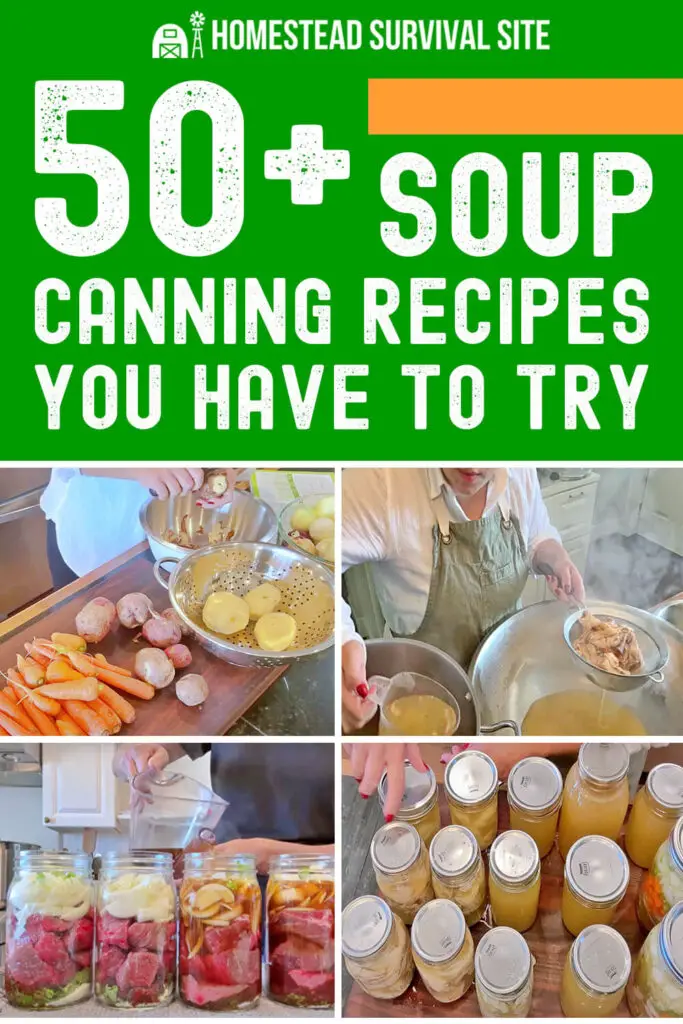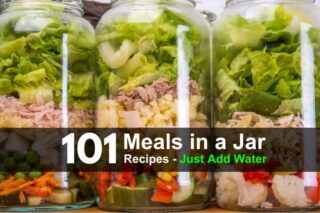Estimated reading time: 5 minutes
There is nothing better to soothe a worried soul than a bowl of hot soup. It’s not just a winter delight. Soup is notoriously filling which can stretch the budget. Imagine going through some of the hardest days of your life when the world just feels like it’s going to crush you. A bowl of soup can make it all better. A bowl of soup that has been customized to your tastes is even better.
If you love to make your own soup, wouldn’t it be nice if you could make a large batch and store it for a quick meal on a day when you just don’t have the time to wait hours for it to simmer. Canning your own homemade soup with ingredients you choose and seasoned just the way you like it is one way to save time, money and ensure you always have a quick, quality meal on hand.
Want to save this post for later? Click Here to Pin It On Pinterest!
Some benefits to canning your own soup:
- Cheaper by a LOT compared to buying cans at the grocery store
- Customizable for special dietary needs
- No worrying about getting sub-quality ingredients
- Reduced preservatives which is always going to be healthier
- Great way to maximize a garden or free produce you get your hands on
- Very convenient to heat and eat
- Homemade just tastes better
- Great way to load up your food storage for very little cost
- They also make great, inexpensive yet thoughtful gifts
Now that you’re convinced, you need to know the basics of canning your own soup. Home canning is safe when done right. This is not an area you want to cut corners or skimp on. Soups must be processed in a pressure canner.
That is the only way to get the temperature needed to kill off the bacteria in low-acid foods. Soups you can at home will often be bases, meaning you’ll add cream, flour or other thickeners later. You cannot add rice or noodles because they won’t hold up and they aren’t safe to can.
- All jars and bands need to be sterilized and in good condition. If a jar is cracked, it’s going to burst during the canning process. Don’t waste your time filling a jar that won’t last. Do not use rusty bands. The risk is just too great. Boil your jars and bands before use or run them through the dishwasher.
- New lids are the way to go no matter what Grandma told you. They are cheap enough to buy new and eliminate the risk of any kind of contamination. It also means you know the wax seal is going to be good.
- A pressure canner with a temperature gauge and a good seal is absolutely critical to the process. If you’re going to buy used CHECK THE SEAL. This is where the magic happens. If you can’t get to the right temperature, all the effort you put into preparing the soup is going to be a waste of time. The heat in a pressure canner not only kills the bacteria and toxins in food, but it also kills the spores which is the key to long-lasting shelf lives.
- Understand acidity. We’ll provide recipes below that are developed for canning. Acid is the key to making foods safe for preservation. Low-alkaline foods, like potatoes, will not be safe to can without a little acid.
- Only use high-quality ingredients. Don’t use mushy carrots or veggies that are moldy. That will contaminate the rest of your ingredients. Don’t use anything overripe or meat that is about to turn. Fresh is best.
- Adequate head space in your jars when filling is going to save you a big mess and keep you from wasting soup from an exploded jar. During processing, the contents will bubble. There needs to be room in the jar for that to happen.
- Always follow recommended processing times. If you’ve never used a canner, read the manual. The pressure matters. Your altitude matters.
- Once you’ve gone through the canning process, your work isn’t done. You’ll need to check the seals. Pushing on the lid is your best way to determine a good seal. If it bounces, it didn’t seal and you’ll need to put the jar in the fridge and eat within a couple of days.
- The right equipment can make your life a little easier. Jar tongs, sharp knives that will give you clean cuts on your ingredients will keep from smashing your meats and veggies, ladles and a funnel are all very helpful.
When you’re ready, check out some of the recipes that have been tried and proven safe to can.
Beans
- Butternut Squash and White Bean Soup
- Bean and Ham
- Black Bean Soup
- Lentil Soup
- Sixteen Bean Soup
- Boston Baked Beans
Beef Soups
- Vegetable Beef Soup
- Beef and Barley Soup
- Italian Meatball Soup
- Stuffed Pepper Soup
- Mexican Beef Garden Soup
- Corned Beef and Cabbage Soup
Broths/Stocks
Chicken Soups
- Classic Chicken Soup
- Mexican Chicken Soup
- Chicken and Corn Chowder
- Chicken Tortilla Soup
- Chicken and Roasted Red Pepper
- Chicken and Garbanzo Soup
- Turkey Soup
- Pozole Verde
Meals in Jars
- Beef Stew
- Chili Con Carne
- Beef Burgundy
- Beef Stroganoff
- Beef Tips and Gravy
- Meatballs in Tomato Juice
- Pot Roast
- Sloppy Joes
- Venison Stew
- Chicken and Gravy
- Zesty Pork and Sausage Stew
- Chicken Pot Pie Filling
- Kentucky Burgoo
- Irish Bean and Cabbage Stew
Pork Soups
Veggie Soups
- Alton’s Garden Vegetable Soup
- Asparagus Soup
- Tomato Soup
- French Onion
- Pea Soup
- Curried Corn
- Leek and Potato Soup
- Carrot Soup
- Butternut Squash Soup Base
- Borscht
Remember everything is at your discretion. If something doesn’t look right, don’t eat it. Botulism is very real and very deadly. If you suspect something is off, throw out the jar as it is. Don’t open it if you don’t have to. Unfortunately, when it comes to pressure canning, you need to follow the recipes as they are written to avoid messing with the acidity which can lead to bacteria growth.
Like this post? Don't Forget to Pin It On Pinterest!
You May Also Like:













There is a russian u tuber Tanya she water bathes all her food I just watched her do beef, onions carrots and rice. What do you think? She foes put 9% vinegar in each jar. Maybe this is the acid environment you talk about.